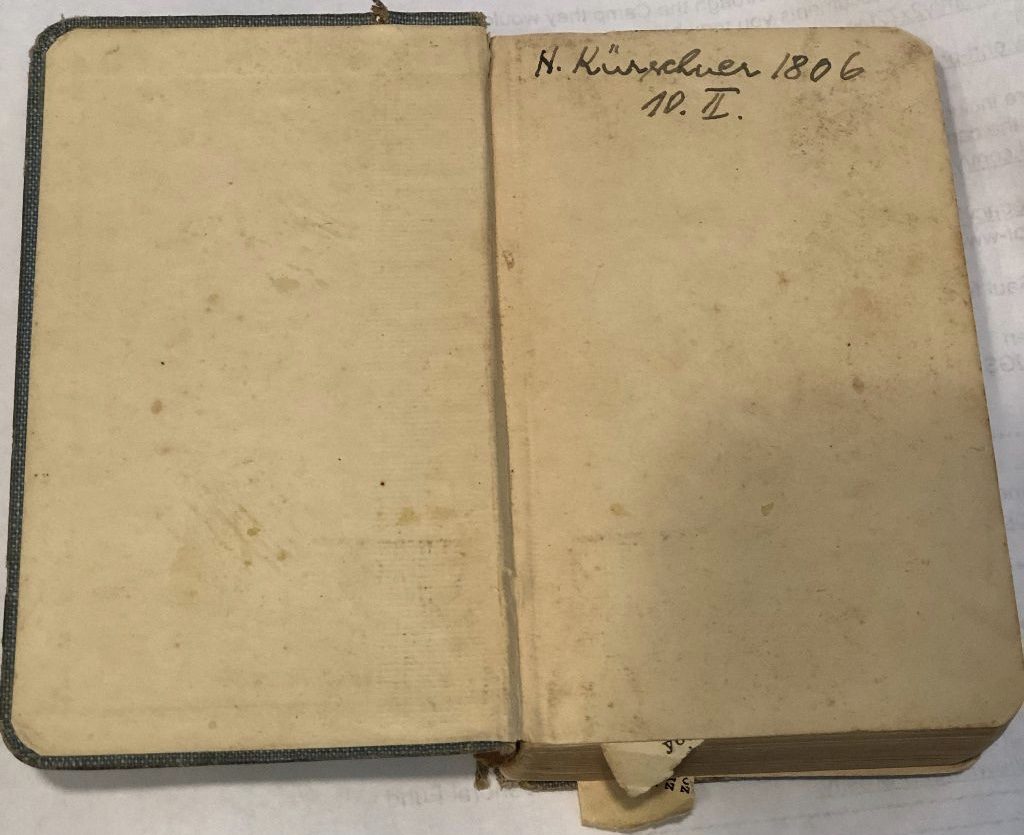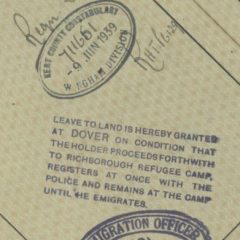We’ve just had a Kitchener item sent in that is both completely ordinary (a book) and completely wonderful, as all Kitchener items are. It’s prompted me to write something about ‘objects.’
There is a section of this website for objects brought out of Germany, Austria, Poland, and so on – our various countries of origin.
While it doesn’t seem sensible to post images of anything of ‘monetary’ value, there is a lot to be said for getting a sense of what was kept in terms of more everyday items. After all, for many of us, what was packed into a few suitcases and trunks is all that’s left from generations of our families. There must be precious few ‘family heirlooms’ in many households with this background that go back more than one generation to our parents’ post-war homes.
Apart from the interest and the poignancy of the ordinary things our fathers chose to bring with them, there are sometimes specifically ‘Kitchener’ treasures around, if we think about it.
Sometimes, we just need to look at an old item differently.
In our home, for example, I have a stack of my dad’s old books, as I’ve mentioned before. I used to vaguely wonder why on earth they were kept, especially once my dad had died, because none of the rest of us could read German. And yet, I find that I too have held on to them; and they are still with me after our latest house move. These days, of course, I’m even less likely to get rid of them than, say, 5 years ago before I really got into the family history!
Since learning so much more about all this, I have been through every old German book on our shelves with a fine-toothed comb, and have found all sorts of bits of working-out (he was a physicist and mathematician) in his meticulous hand-writing, but also notes, newspaper cuttings – all kinds of things that now have meaning for me.
Indeed, when we were clearing things for our recent house move, I also realised that a tatty old suitcase in the barn, which I’d vaguely earmarked for disposal, had the following label on it …

…………………………………………….
Anyway – as you all know, we Kitchener Kids don’t have much left that tells us about the day-to-day workings, or organisation, of the camp, so we have to make what we can of what we can collect together.
And, as I mentioned at the start of this post, today’s apparently ordinary book – a German-English dictionary – has in fact proven to be a real ‘find’.
Because inside is not only the name of the man whose book it is, but some numbers, which probably meant little to the family who have cared for this item through all these decades.
And why would a few apparently random numbers written inside a book mean much? Certainly, they’d have meant nothing to me 18 months ago.
Now, however, we can see with great interest that our Kitchener refugee wrote inside his book his hut number – Hut 10/II – and his camp number – 1806.
When I have time I will take a look at the instances where we know a man’s camp number and his arrival date – and from this we will be able to work out the approximate date when our book owner, Nuchim, arrived.
Also sent in with this wonderful Kitchener book are two group photographs. Do take a look. Because if your father or grandfather is in this typical ‘Hut Group’ photograph, you’ll now know he was almost certainly in Hut 10/II as well.
This is what I mean when I talk about the importance of gradually building up lots of small pieces of seemingly ordinary information.
From such precious items and materials, we are gradually creating a substantial bank of knowledge.

